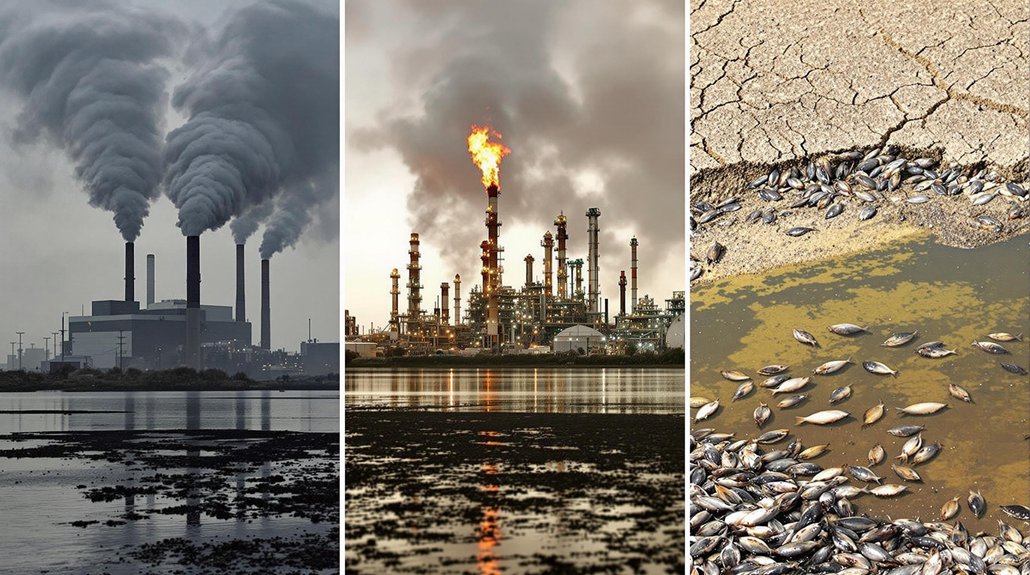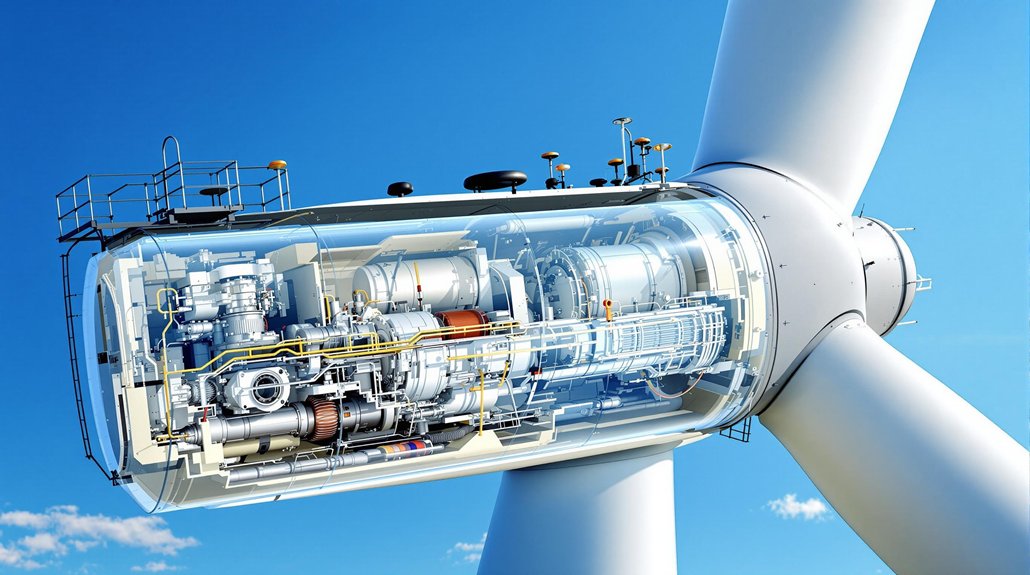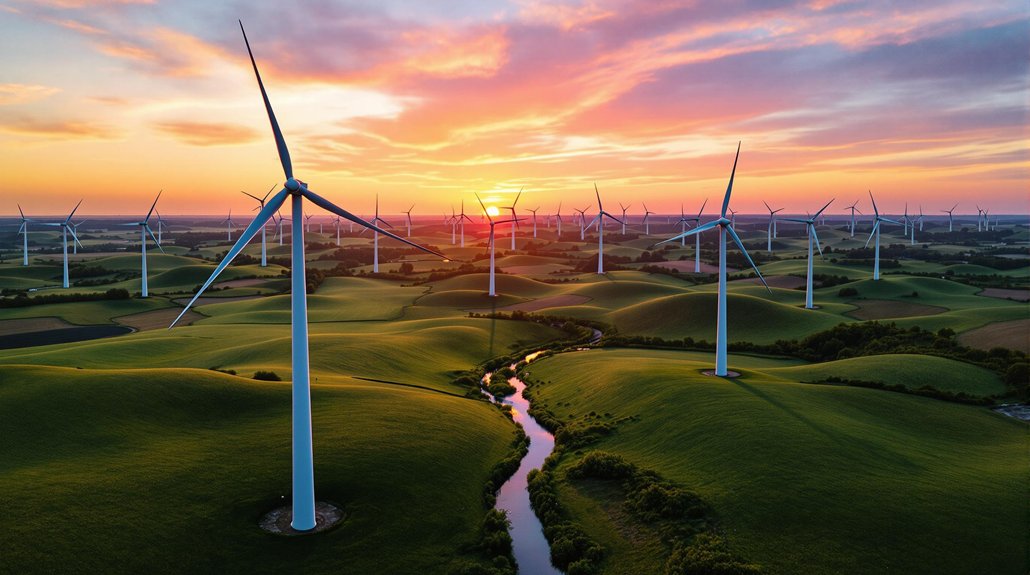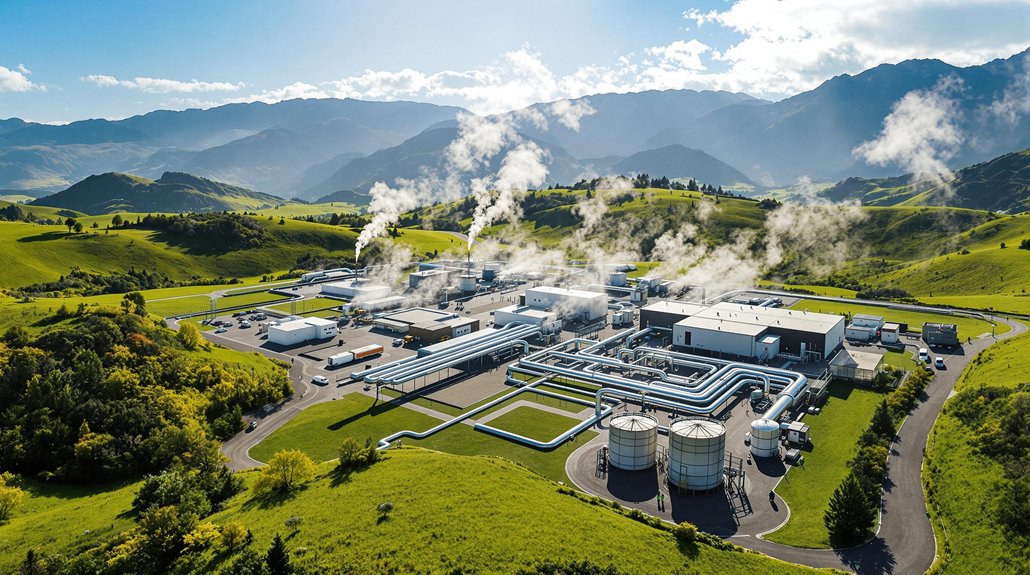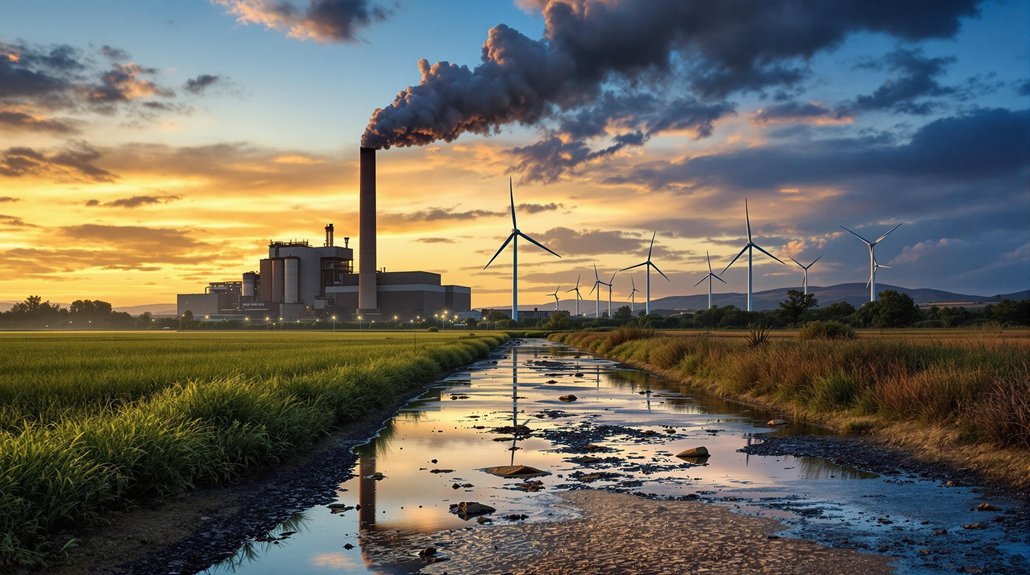Energy production creates five main pollution types that harm our environment. Air pollution includes particulate matter and toxins that damage lungs. Water pollution occurs from thermal discharge, oil spills, and chemical leaks. Soil contamination results from waste disposal and spills. Non-chemical pollution involves noise and light disruptions. Greenhouse gas emissions trap heat and drive climate change. The environmental impact extends far beyond what meets the eye.
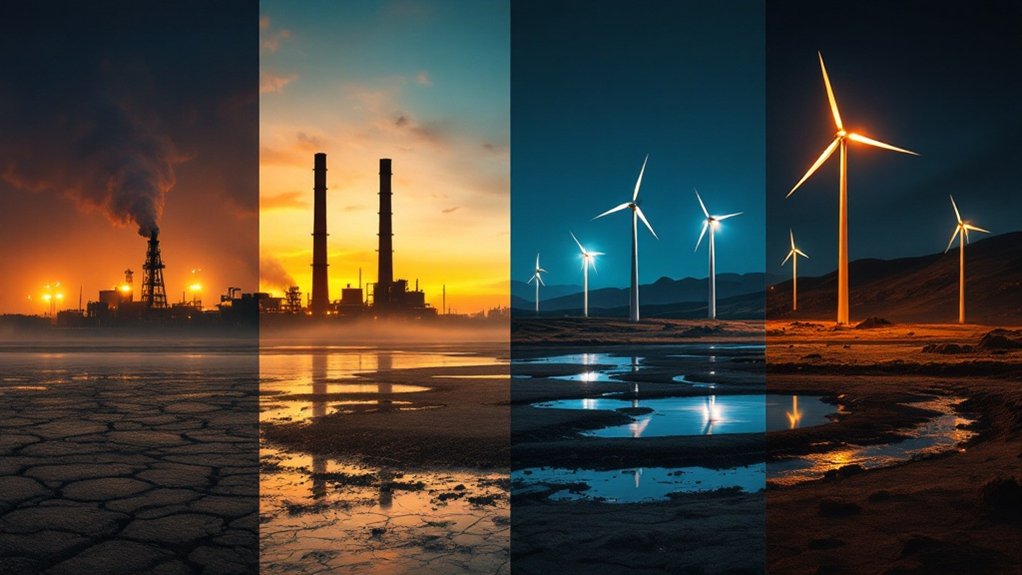
While modern society relies heavily on energy for daily life, the production of this energy often comes with environmental costs. Energy sources like coal, oil, natural gas, and even renewable options create various types of pollution. These pollutants affect our air, water, soil, and overall environment in different ways.
Air pollution is one of the most visible impacts of energy production. Fossil fuels release particulate matter, sulfur dioxide, and nitrogen oxides when burned. These chemicals can cause respiratory problems in humans. Coal plants also emit mercury and other heavy metals into the air. Coal-fired power plants represent the largest uncontrolled source of mercury emissions in Canada. When nitrogen oxides mix with volatile organic compounds in sunlight, they form ground-level ozone, which damages lungs.
The invisible killer – fossil fuels spew toxins that choke our air and damage our lungs with every breath.
Water bodies suffer when energy is produced too. Power plants release heated water that disrupts aquatic ecosystems. Coal mining creates acid drainage that harms waterways. Oil spills damage marine life, while fracking can contaminate groundwater with chemicals. Heavy metals from various energy operations often end up in lakes and rivers.
The soil also becomes polluted through energy production. Coal ash disposal sites leak contaminants into surrounding land. Oil and chemical spills damage soil fertility. Nuclear accidents can leave radioactive material in soil for years. Acid rain from power plant emissions makes soil more acidic, affecting plant growth.
Energy production creates non-chemical pollution too. Wind turbines produce low-frequency noise that bothers nearby residents. Drilling operations are noisy. Energy facilities need bright lights for safety, creating light pollution that affects wildlife and obscures the night sky. Research shows that light pollution disrupts natural ecosystems by confusing animal behavior and migration patterns.
Radioactive materials present unique challenges. Nuclear power creates waste that remains dangerous for thousands of years. Even coal contains trace radioactive elements that concentrate in ash.
Finally, many energy sources release greenhouse gases like carbon dioxide and methane. These gases trap heat in the atmosphere, contributing to global climate change. The burning of fossil fuels is the primary source of carbon dioxide emissions driving global warming and subsequent sea level rise. Methane leaks from natural gas operations are particularly potent greenhouse gases, while carbon dioxide from coal and oil burning is the largest contributor by volume.
Frequently Asked Questions
How Do Energy Sources Compare in Overall Environmental Impact?
Energy sources vary greatly in environmental impact. Fossil fuels cause the most harm, releasing high greenhouse gas emissions and pollutants.
Nuclear energy produces minimal emissions but generates radioactive waste.
Renewables like solar and wind have the lowest overall impact, though they require large land areas.
Hydropower and geothermal provide reliable energy with moderate impacts, potentially altering local ecosystems.
Each source presents different environmental trade-offs for society to evaluate.
What Technologies Reduce Pollution From Traditional Energy Sources?
Several technologies cut pollution from traditional energy sources.
Flue gas desulfurization removes sulfur dioxide from exhaust.
Selective catalytic reduction cuts nitrogen oxides by 90%.
Electrostatic precipitators capture 99% of particulates.
Advanced systems like supercritical coal plants increase efficiency to 45%.
Fluidized bed combustion reduces emissions by 90%.
Carbon capture technology removes up to 90% of CO2.
Combined heat and power systems improve overall efficiency to 80%.
How Does Energy Pollution Affect Human Health Specifically?
Energy pollution harms human health in several ways.
Particulate matter from fossil fuels triggers asthma and increases lung cancer risk. Air pollutants cause heart attacks and strokes while damaging blood vessels.
Children’s developing brains suffer from reduced IQ and cognitive delays when exposed to pollutants. Pregnant women face risks of preterm births and low birthweight babies.
Many fossil fuel components are known carcinogens linked to various cancers.
Which Countries Have the Lowest Energy-Related Pollution Levels?
Several countries have achieved remarkably low energy-related pollution levels.
Nordic nations like Sweden, Norway, and Iceland lead with electricity systems powered almost entirely by renewables and nuclear.
France generates 92% of its electricity from zero-carbon sources.
Switzerland has the lowest carbon intensity among developed economies.
Costa Rica and Uruguay run on nearly 100% renewable electricity.
These countries combine strong climate policies with abundant natural resources for clean energy.
What Economic Costs Are Associated With Energy Pollution?
Energy pollution carries massive economic costs worldwide.
Fossil fuel air pollution alone costs $2.9 trillion annually, equal to 3.3% of global GDP. It causes 4.5 million premature deaths yearly and leads to 1.8 billion missed work days.
The US loses $600 billion annually from air pollution.
Agricultural impacts include 3-16% crop yield losses.
Studies show investing in clean energy creates more jobs than fossil fuels.
